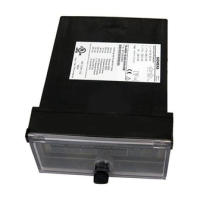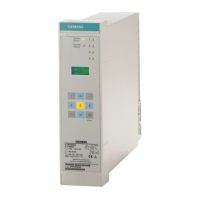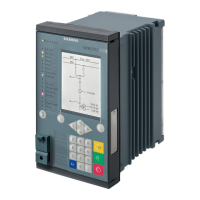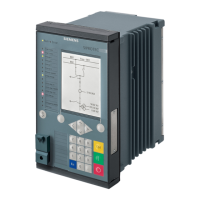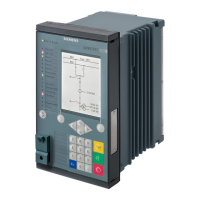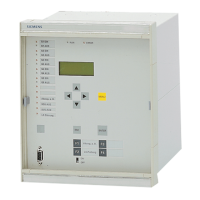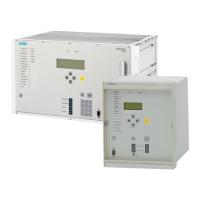No. Information Type of
Informa-
tion
Comments
196 Fuse Fail M.OFF OUT Fuse Fail Monitor is switched OFF
197 MeasSup OFF OUT Measurement Supervision is switched OFF
289 Failure Σi OUT Alarm: Current summation supervision
290 Broken Iwire L1 OUT Alarm: Broken current-wire detected L1
291 Broken Iwire L2 OUT Alarm: Broken current-wire detected L2
292 Broken Iwire L3 OUT Alarm: Broken current-wire detected L3
295 Broken wire OFF OUT Broken wire supervision is switched OFF
296 Σi superv. OFF OUT Current summation superv is switched OFF
297 ext.Brk.Wire ØA OUT Broken current-wire at other end ØA
298 ext.Brk.Wire ØB OUT Broken current-wire at other end ØB
299 ext.Brk.Wire ØC OUT Broken current-wire at other end ØC
3270 >RESET BW SP >RESET broken wire monitoring
3271 Broken Iwire a IntSP Alarm: Broken current-wire detected A
3272 Broken Iwire b IntSP Alarm: Broken current-wire detected B
3273 Broken Iwire c IntSP Alarm: Broken current-wire detected C
74TC Trip Circuit Supervision
The 7SD80 line protection is equipped with an integrated trip circuit supervision function. Depending on the
number of available binary inputs (not connected to a common potential), supervision with one or two binary
inputs can be selected. If the routing of the binary inputs required for this does not comply with the selected
monitoring mode, an alarm is given (“TripC1 ProgFAIL ...”, with identification of the non-compliant circuit).
When using two binary inputs, malfunctions in the trip circuit can be detected under all circuit-breaker condi-
tions. When only one binary input is used, malfunctions in the circuit breaker itself cannot be detected. If
singlepole tripping is possible, a separate trip circuit supervision can be implemented for each circuit-breaker
pole provided the required binary inputs are available.
Functional Description
Monitoring with Two Binary Inputs
When using two binary inputs, these are connected according to Figure 2-73, parallel to the associated trip
contact on one side, and parallel to the circuit-breaker auxiliary contacts on the other.
A precondition for the use of the trip circuit supervision is that the control voltage for the circuit breaker is
higher than the total of the minimum voltages drops at the two binary inputs (V
Ctrl
> 2·V
BImin
). Since at least 19
V are needed at each binary input, the supervision can only be used with a system control voltage higher than
38 V.
2.14.2
2.14.2.1
Functions
2.14 Monitoring Functions
162 SIPROTEC 4, 7SD80, Manual
E50417-G1100-C474-A2, Edition 02.2018

